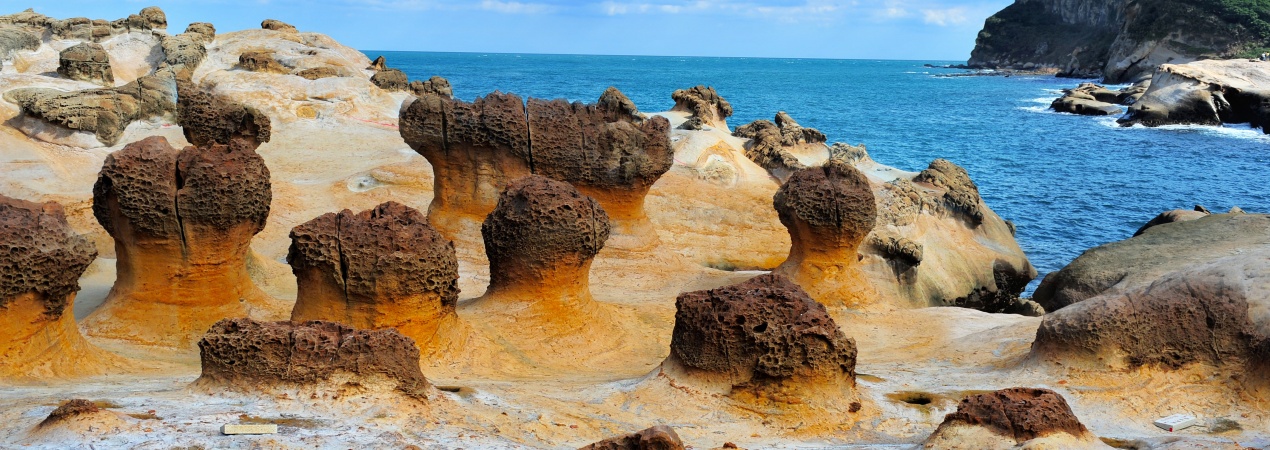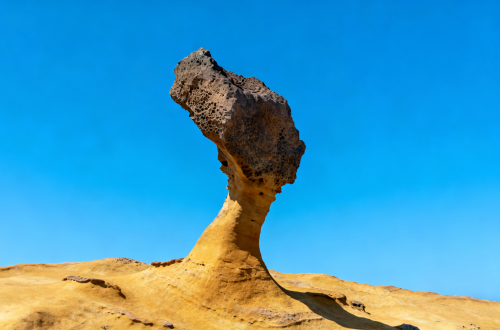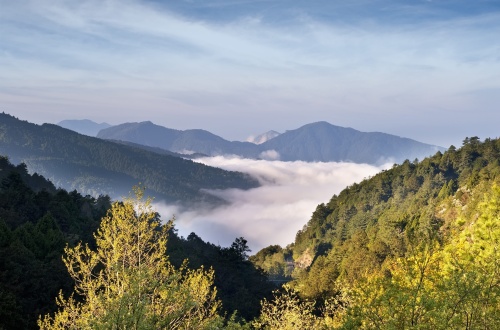Yehliu Geopark

Yehliu Geopark sits in Wanli District, New Taipei City, Taiwan, China. Yehliu itself is a headland (part of the Datun Mountain Range) sticking out above the sea, and it's about 1,700 meters long. Marine erosion, weathering and crustal movement have shaped the geopark, creating a long line of unique landscapes—like sea-eroded caves and gullies, honeycomb rocks, candle-shaped rocks, tofu rocks, mushroom rocks, potholes and dissolution pans.
- Chinese name:野柳地质公园 Yě Liǔ Dì Zhì Gōng Yuán
- Recommended Duration: 1-2 hours
- Entrance Fee: RMB 17
- Best time to visit: March-May and September-November
- Address: No. 167-1, Gangdong Road, Yehliu Village, Wanli District, New Taipei City, Taiwan, China
- How to get there: Take Keelung Bus 790, 1068, 953, Danshui Bus 862, Guoguang Bus 1815, or Taiwan Good Trip 716 to Yehliu Station, then walk to the geopark
Highlights of Yehliu Geopark
Queen's Head
 Queen's Head
Queen's HeadIt is the iconic landscape of Yehliu Geopark and one of the most internationally renowned sea erosion wonders. Classified as a mushroom rock, it gets its name from its resemblance to the profile of Britain's Queen Elizabeth. Formed gradually by differential marine erosion during the crustal uplift process, its age is estimated at nearly 4,000 years based on the average uplift rate of the northern Taiwan crust. Due to long-term weathering and erosion, the "neck" of the Queen's Head has become increasingly thin. Currently under protection, visitors can line up along the surrounding man-made wooden boardwalks to view it from a distance and take photos.
Mushroom Rock Area
 Mushroom Rock Area
Mushroom Rock AreaOne of the unique landscapes in Yehliu Geopark is the Mushroom Rock Area. Here, you can see groups of mushroom rocks as far as your eyes can reach. As time passes, hard concretions inside the sandstone are exposed. Then wind, sun, rain, ocean waves and strong northeastern monsoons work together on these concretions. They turn into mushroom-shaped rocks in different forms—some have no necks, some have thick necks, and some are broken. Some look like mushrooms, others like castles. Each has its own shape, just like artworks carefully made by nature. This makes visitors amazed at how great nature's work is.
Candlestick Rocks
Candlestick Rocks are also a famous sight in Yehliu Geopark. How they form is quite unique: the "candle flame" is really a spherical concretion in the rock layer. When seawater wears away the sandstone, the harder spherical concretion sticks out of the ground. When waves hit this concretion, they flow around it. This wears away the sandstone around the concretion and digs a circular groove downwards. There's a hard ring around the concretion, so seawater wears away and cuts down along this ring, making a conical shape. In the end, this special candlestick-like landscape is formed—it's like nature has lit an eternal lamp for this coast.
Monoclinal Ridge
The Monoclinal Ridge is a scenic spot in Area 2 of Yehliu Geopark. Its feature is that one side has a steep slope while the other side has a gentler slope. It forms because when the stratum is squeezed, uneven uplift occurs due to differences in force and speed. Meanwhile, the stratum is squeezed and uplifted, which also causes it to break and fracture. After erosion by seawater, it gradually forms a terrain like a "natural slide". When walking to the Monoclinal Ridge, visitors can enjoy its unique landform while viewing the sea scenery of sea-eroded cliffs and sea-eroded platforms, and feel the magical power of nature.
Educational Value
Yehliu Geopark is not only the first stop for migratory birds arriving in Taiwan during their southward migration, but also one of the last resting spots before their northward return. Every year during the southward and northward migration periods, especially in March, April and October, it is a must-visit place for watching migratory birds. Among them, rare bird species such as the Yellow-browed Bunting, Yellow-throated Bunting, Hoopoe, Paradise Flycatcher, Yellow-browed Warbler, Eurasian Curlew and Blackbird are particularly talked about. A headland extending into the sea as part of the Datun Mountain Range, Yehliu boasts various unique landscapes shaped by years of sea wave erosion, rock weathering and crustal movement.
Activities to do at Yehliu Geopark
Geological trail tour: Step into the park, and your first stop is Zone 1—here, you can see how mushroom rocks form along the path. In Zone 2, the famous spots you'll find are the Queen's Head, Dragon Head Rock and King Kong Stone. Walk a little further, and you'll reach Zone 3. It's a narrow coastal platform; steep cliffs are next to it, and rough seas are below. Be careful here.
Drop us a line and we'll connect you with the top China expert in no time!
 Sun Moon Lake
Sun Moon Lake  Alishan
Alishan  Kenting National Park
Kenting National Park  Taroko National Park
Taroko National Park